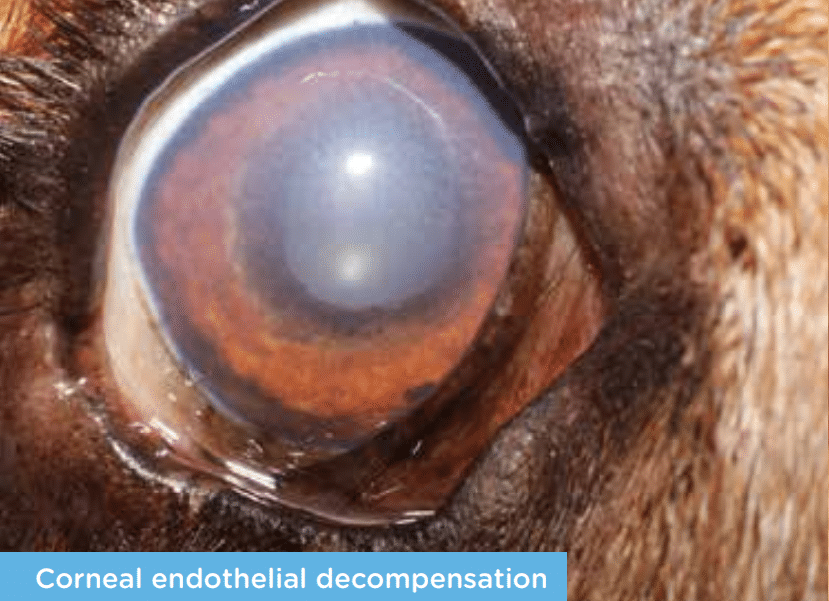Corneal endothelial degeneration
Why is my dog’s eye turning blue?
There are several conditions, which can make the eye appear blue – including but not limited to, inflammation in the eye (uveitis), increased ocular pressure (glaucoma), ulceration of the surface of the eye (cornea), cataracts – however a common condition in ageing animals is corneal endothelial degeneration/decompensation.
What is the cause of corneal endothelial degeneration/decompensation?
Corneal endothelial degeneration is a condition usually encountered in ageing dogs. The cornea functions as a clear window to allow light to enter the eye. It is a very delicate and complex structure, which maintains its transparency by microscopic fluid pumps located within cells on the inside of the cornea, which remove fluid from the cornea. These cells degenerate with progressive age and similar to brain cells, don’t regenerate. As these cells reach a critical number, the pumping mechanism becomes insufficient to maintain transparency and the cornea becomes cloudy, due to accumulation of fluid within the cornea.
Should I worry about this condition?
In the initial stages of disease it is unlikely for your pet to show any obvious signs of visual impairment or discomfort. In advanced stages you will notice an effect on vision and there is a risk of development of corneal ulceration, which will cause discomfort. Early diagnosis and treatment are therefore advised.
Can both eyes be affected?
Yes, but not necessarily at the same time.
Are any breeds predisposed?
Any breed can be affected, however a slight overrepresentation has been observed in Boston Terriers, Chihuahuas, Dachshunds and German Shepherds.

What treatment options do I have?
In the early stages of disease the condition may be successfully controlled with eye drops to draw out fluid from the cornea. However, as this is a progressive disease, surgical intervention is usually required at some point. Surgical treatments for this condition include placement of conjunctiva (thin layer of blood vessels) in the periphery of the cornea to provide fluid drainage to the cornea or thermokeratoplasty (technique to scar the cornea by heat application). As with most medical conditions there is no “one-size-fits-all” solution for all cases. The treatment will be tailored to your pets’ requirements.
What happens if I do nothing?
If left untreated the condition will progress, resulting in gradual deterioration of vision and development of chronic ocular surface disease (corneal ulceration), which are more challenging to treat in advanced cases than in early stages of disease.
